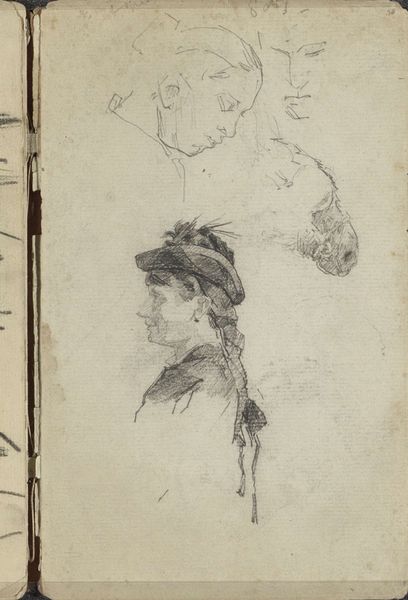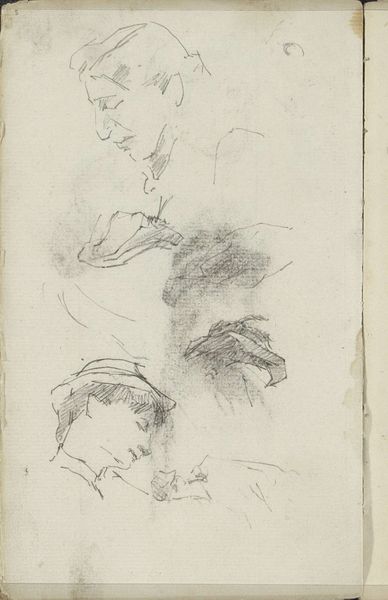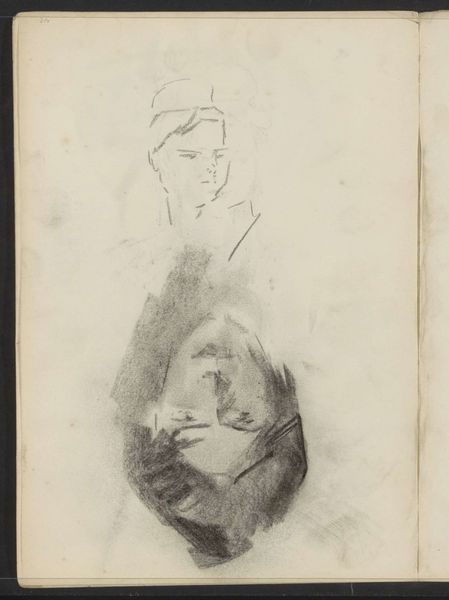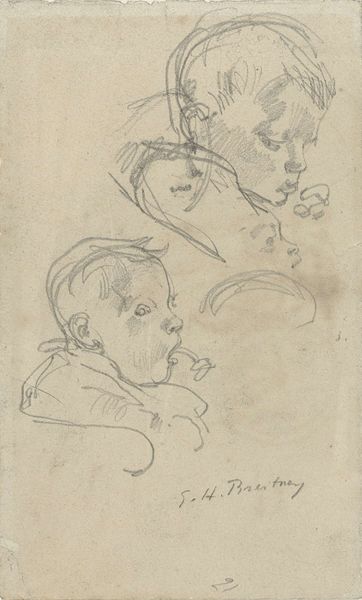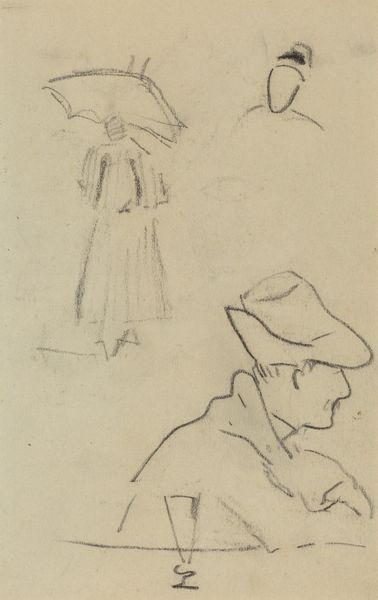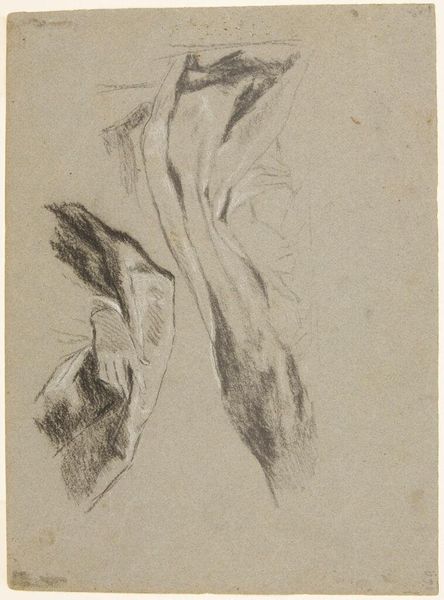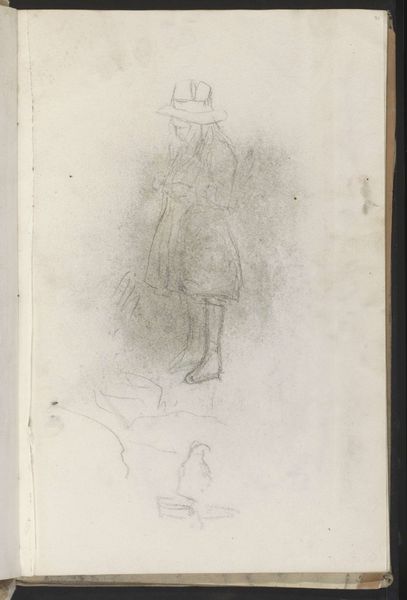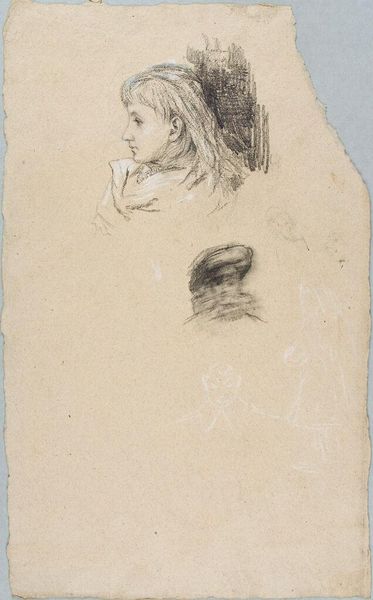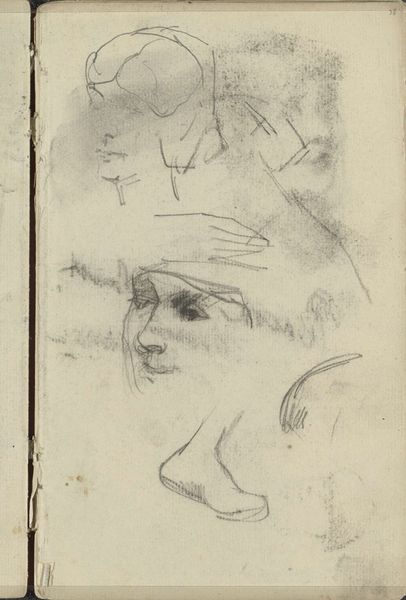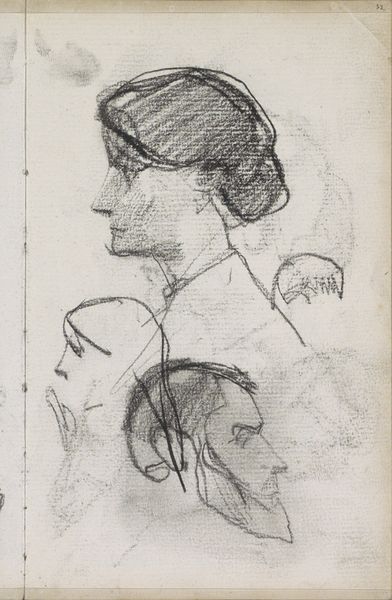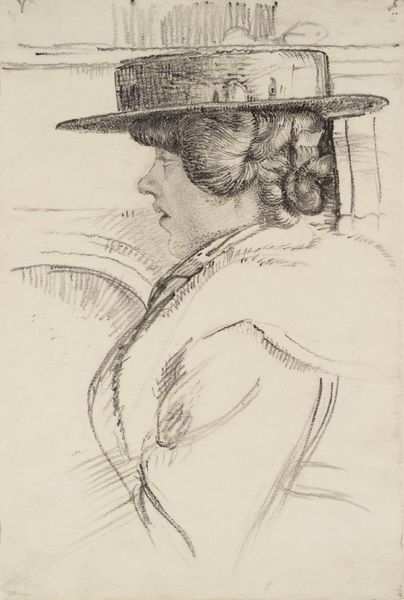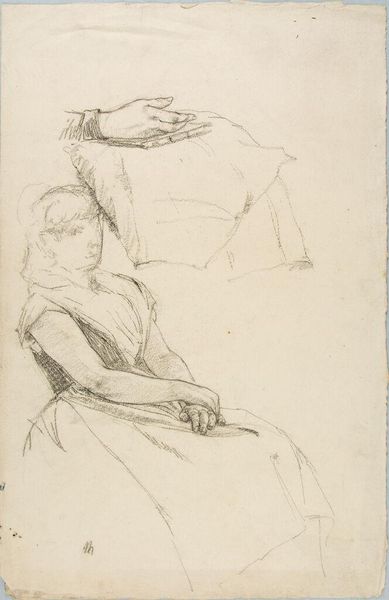
Copyright: Rijks Museum: Open Domain
Curator: Let's turn our attention now to "Three Men's Heads with Hats," a pencil drawing made around 1862 by Johannes Tavenraat, housed here at the Rijksmuseum. What's your immediate reaction to this sketch? Editor: Restrained, almost melancholic. It's like a glimpse into a quiet moment of reflection. There's a palpable weariness in those downcast eyes. I am immediately interested in their garments as they seem to have meaning and connection to the person who wore them. Curator: I think the Romanticist influence certainly emphasizes individual emotion, doesn't it? Knowing Tavenraat was working in the wake of the Dutch Golden Age, it’s fascinating to see how he maintains that Realist observation, but applies it to a more introspective subject. These are working men, yes, but lost in thought. Editor: Exactly, and the hats become incredibly important signifiers. Note the materials, probably wool or felt, quite everyday. Were these made at home, perhaps through cottage industries, or mass-produced in developing factories? The very fact that these men, presumably laborers of some kind, needed hats—what does that tell us about their work, their exposure to the elements? This drawing whispers about the economics of the mid-19th century and fashion and labor. Curator: Yes! And the artist captures that so subtly through the rough textures he renders with simple pencil strokes. You almost feel you could reach out and touch the fabric. The materiality grounds it, doesn't it, prevents it from becoming overly sentimental. There’s also the repeated form, the trio itself-- why these three men, and why captured in one drawing? What is their relation? What's the narrative? I want to dive into it further and find out. Editor: The placement also raises questions, and the repeated use of head coverings asks to the conditions of working-class attire in this era. Do the marks from the artist reveal him sitting at his station sketching in person, versus from another scene? I notice the way they each obscure their sight - their agency and future are partially concealed. Curator: It certainly makes you ponder the layers beneath the surface. Something so seemingly simple – a quick study of three men – holds so much complexity. It feels strangely contemporary. Editor: Agreed. The economic structures and the labor which they portray endure and connect to many present-day inequalities of power. Curator: Thank you, your points are illuminating. Perhaps the beauty is not just in what's depicted, but in what the drawing evokes.
Comments
No comments
Be the first to comment and join the conversation on the ultimate creative platform.

